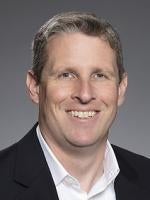Skilled nursing facilities (SNFs) operate in a changing and challenging environment. The upcoming implementation by the Centers for Medicare & Medicaid Services (CMS) of a Patient Driven Payment Model will shift the reimbursement paradigm for SNFs from a focus on the volume of services provided to a focus on specific, clinically-relevant patient characteristics. Combining this significant change in reimbursement criteria with the challenges of low to non-existent profit margins, high employee churn, federal and state regulatory scrutiny and an active plaintiffs’ class action bar, means that in order to survive in today’s marketplace, SNFs must evolve their practices to maximize their operational efficiency and improve their bottom line.
Enter infection control as an operational area desperately in need of innovation and improvement. Sadly, the prevalence of infections such as influenza, pneumonia, UTI and other diseases that are highly preventable remain all too common. This results in millions of cases of infection, tens of thousands of deaths, and billions of dollars of often avoidable healthcare costs per year throughout U.S. healthcare facilities. However, better risk assessment, prevention planning, and monitoring offer the promise to curtail incidences of infection. The catalyst for improvement in all of these areas is better data gathering and communication processes.
Several state health departments, including the California Department of Public Health’s (CDPH) Center for Health Care Quality, have emphasized the importance of best practices in data gathering and communication as a driver of infection prevention and control. Still, the current state of practice for recording and communicating the critical data necessary to assess and monitor infection risks and to prevent and respond to infection outbreaks remains tied to antiquated paper forms and records. Such practices are time consuming and costly. Moreover, they are not conducive to the sort of data analysis (including advanced machine learning and artificial intelligence techniques) that have shown promise in several other sectors of the healthcare industry.
But those practices could be changing. According to Dr. Jim Hill, the CEO of Organizational Performance Systems (ops1.com), simple, digital and cloud-based technologies are streamlining daily infection control and monitoring practices for SNFs. For example, the use of basic tablet- or computer-based point and click functionality to log caregiver adherence to hygiene practices (such as hand washing) reinforces infection control protocols and improves diagnostic precision by better tracking disease vectors within patient populations. Once such data is collected in digital form, other benefits include the ability to establish real-time monitoring and alert systems and streamline internal and regulatory reporting processes. In the future, such data sets are likely to help in the development of therapeutic treatments for various infectious diseases.
For the SNF, the cost/benefit analysis of adopting these information technology improvements could lead to greater implementation across the industry. As Dr. Hill highlights, “facilities that move infection control practices to the cloud save upwards of one full-time equivalent, see their infection rates drop by as much as 50%, and dramatically simplify these aspects of their survey preparation.” With approximately 15,600 SNFs in operation nationwide, industry wide adoption of these information technology improvements could lead to significant economic and health benefits.



 i
i


